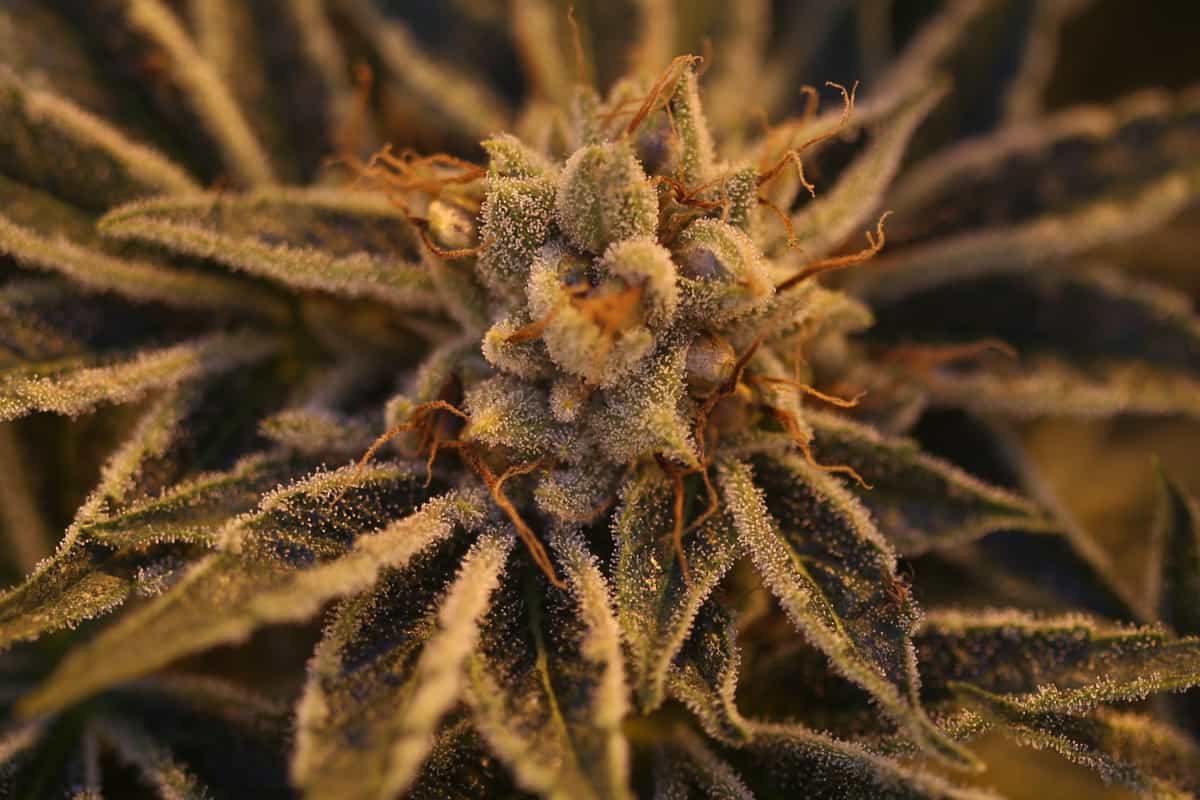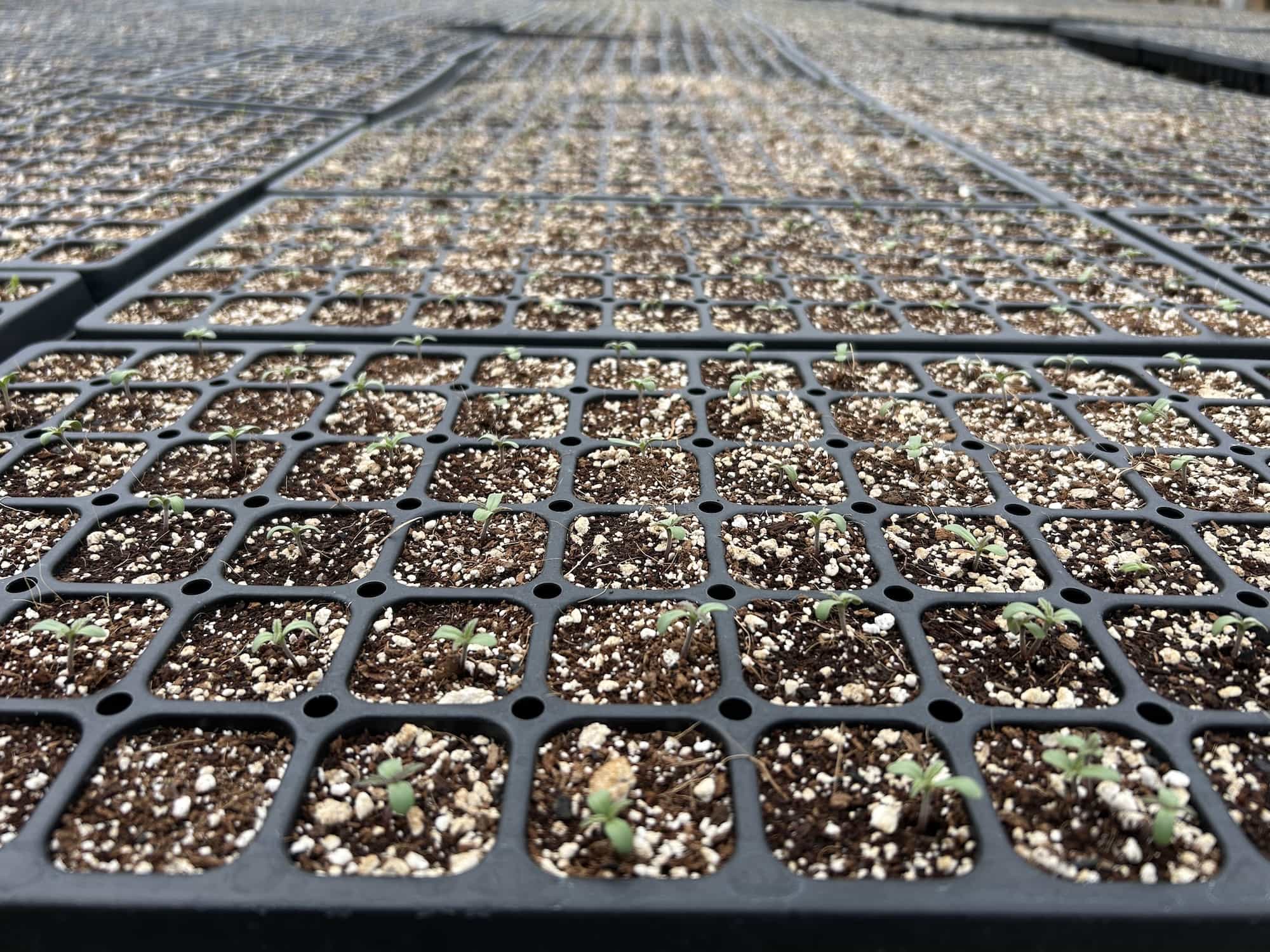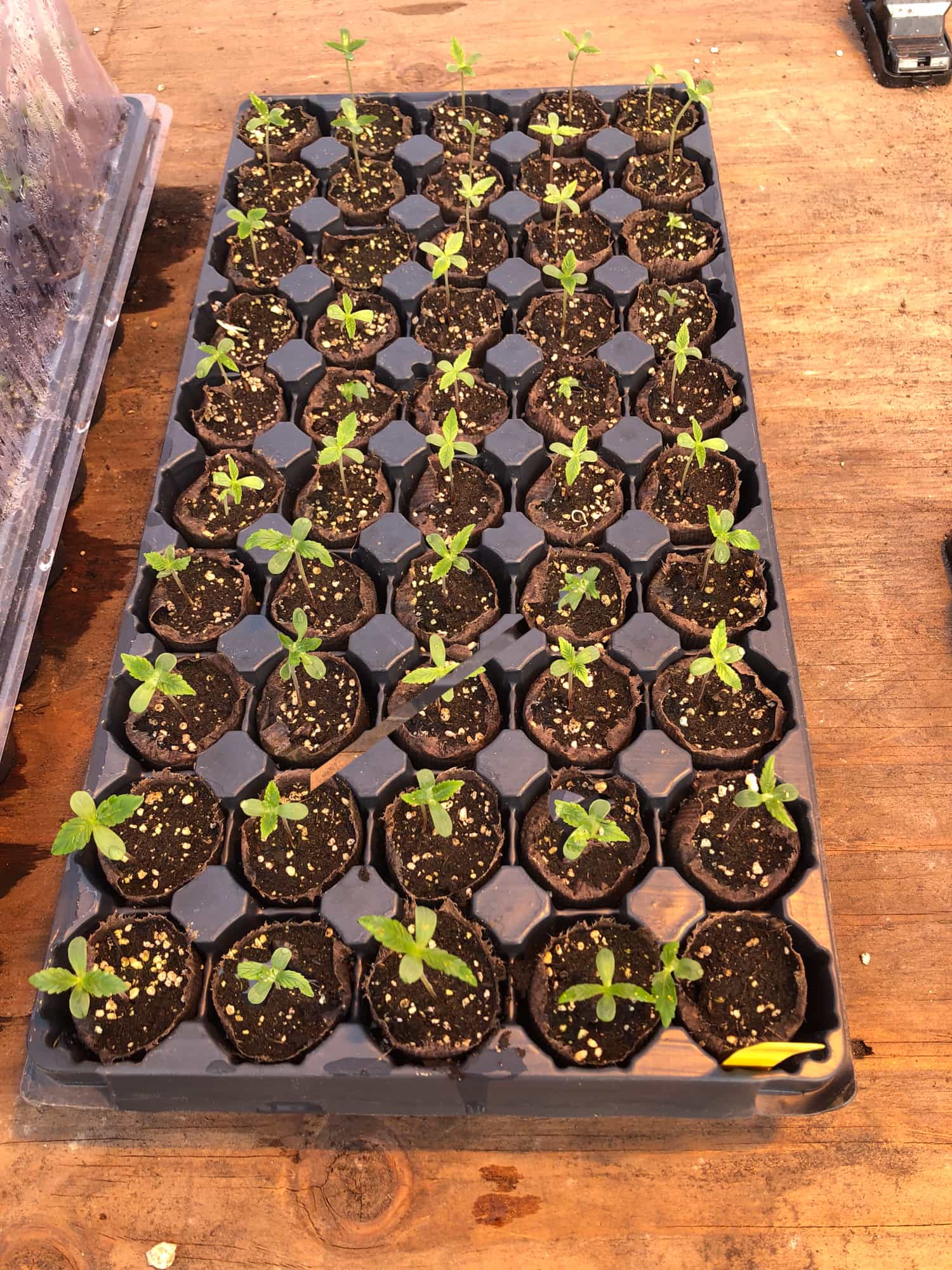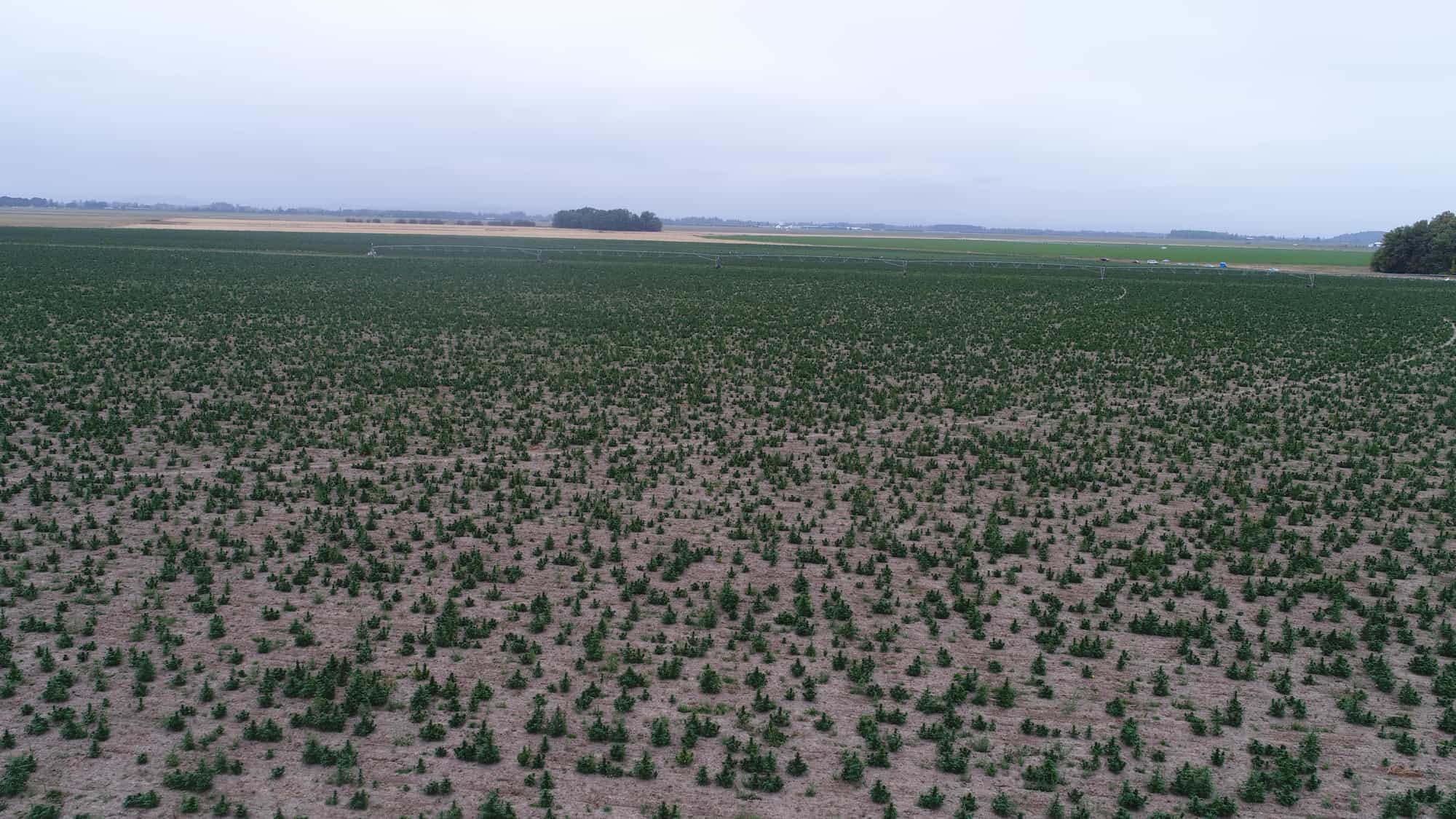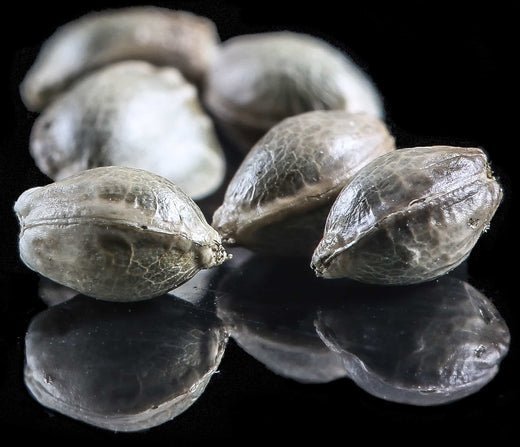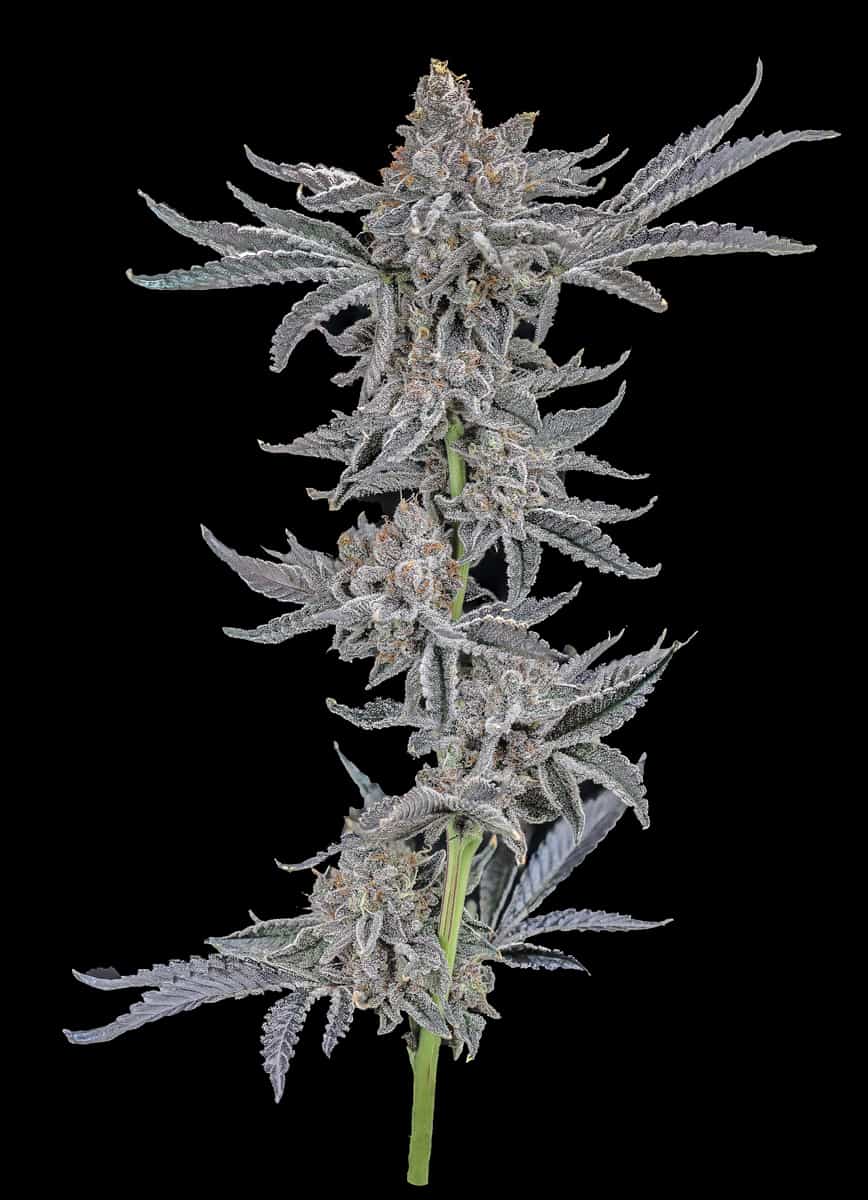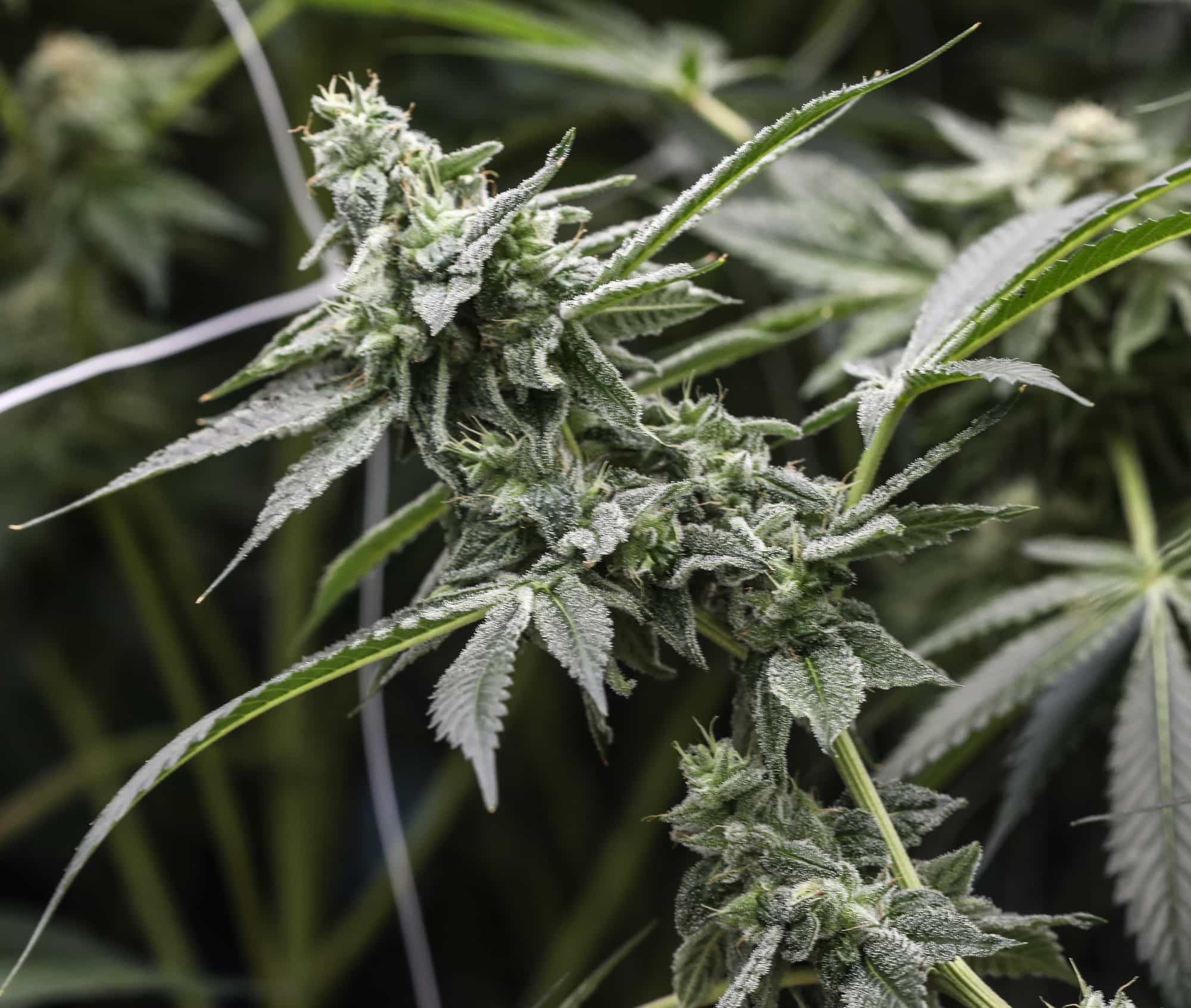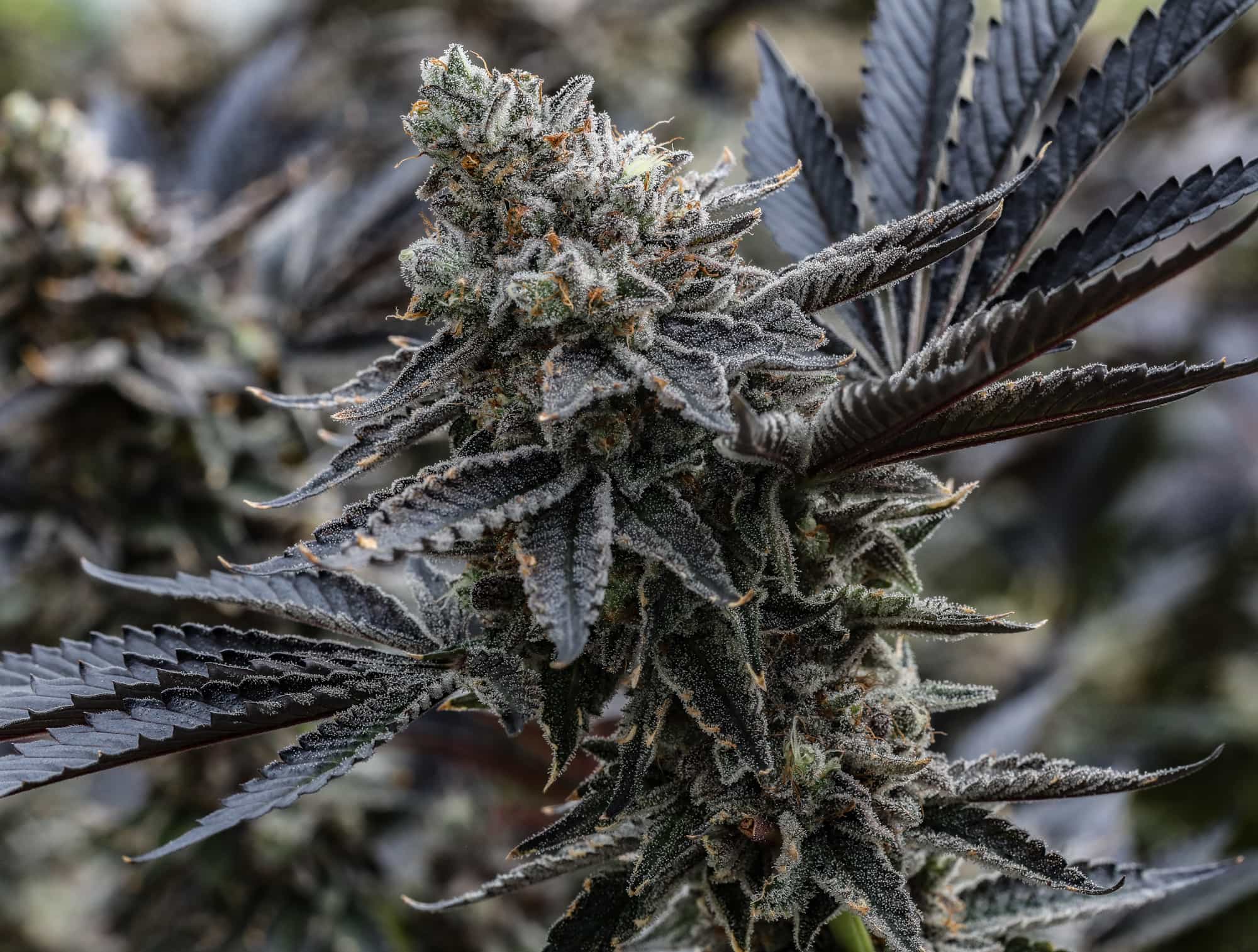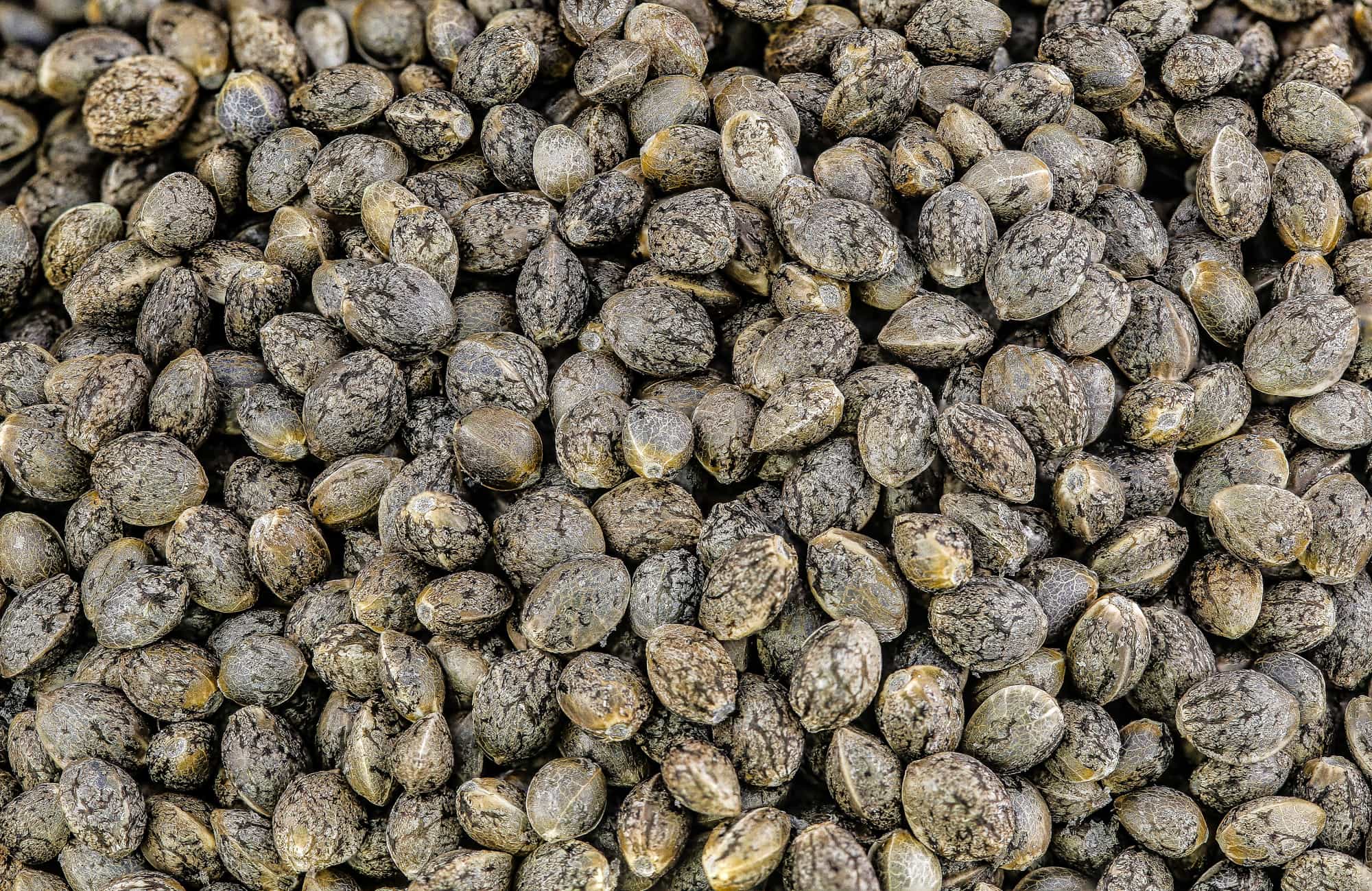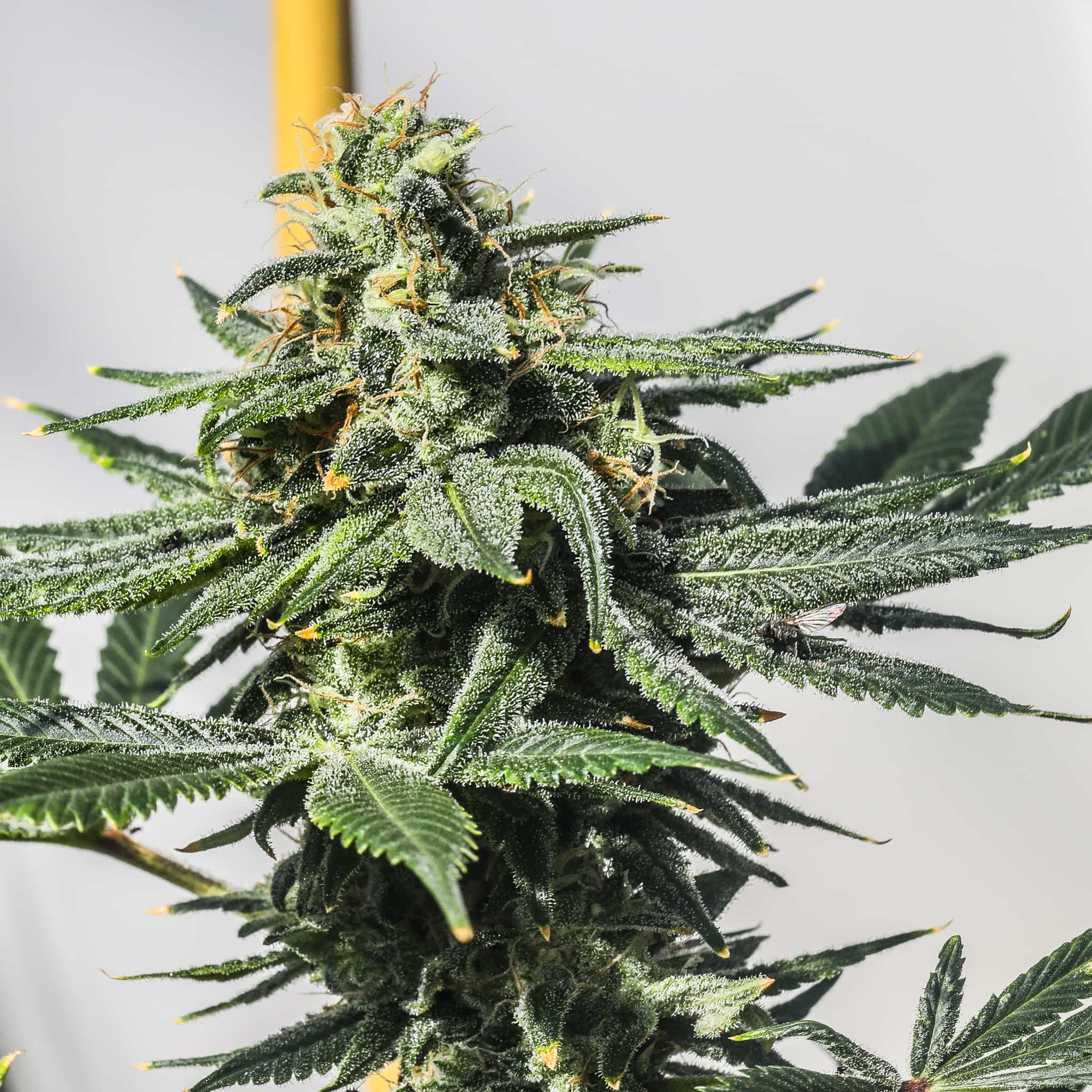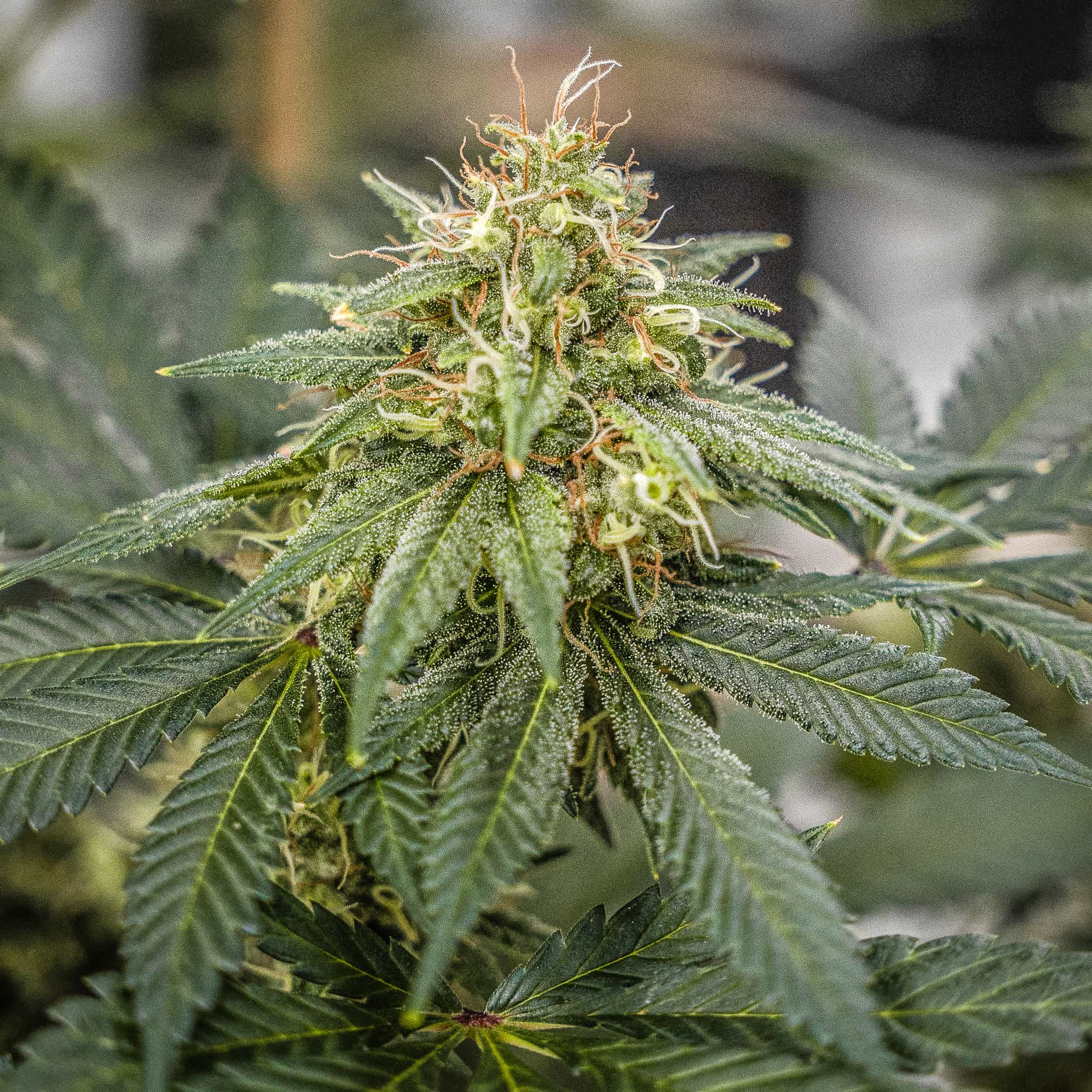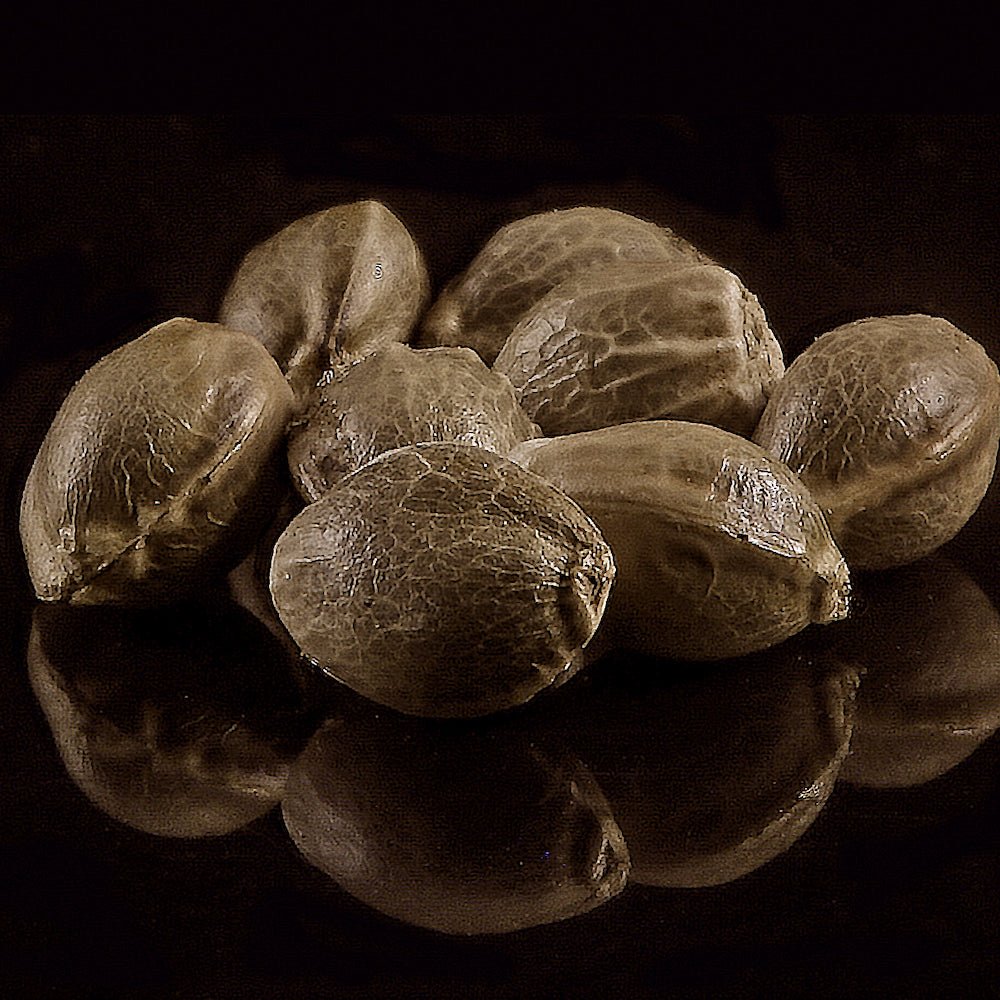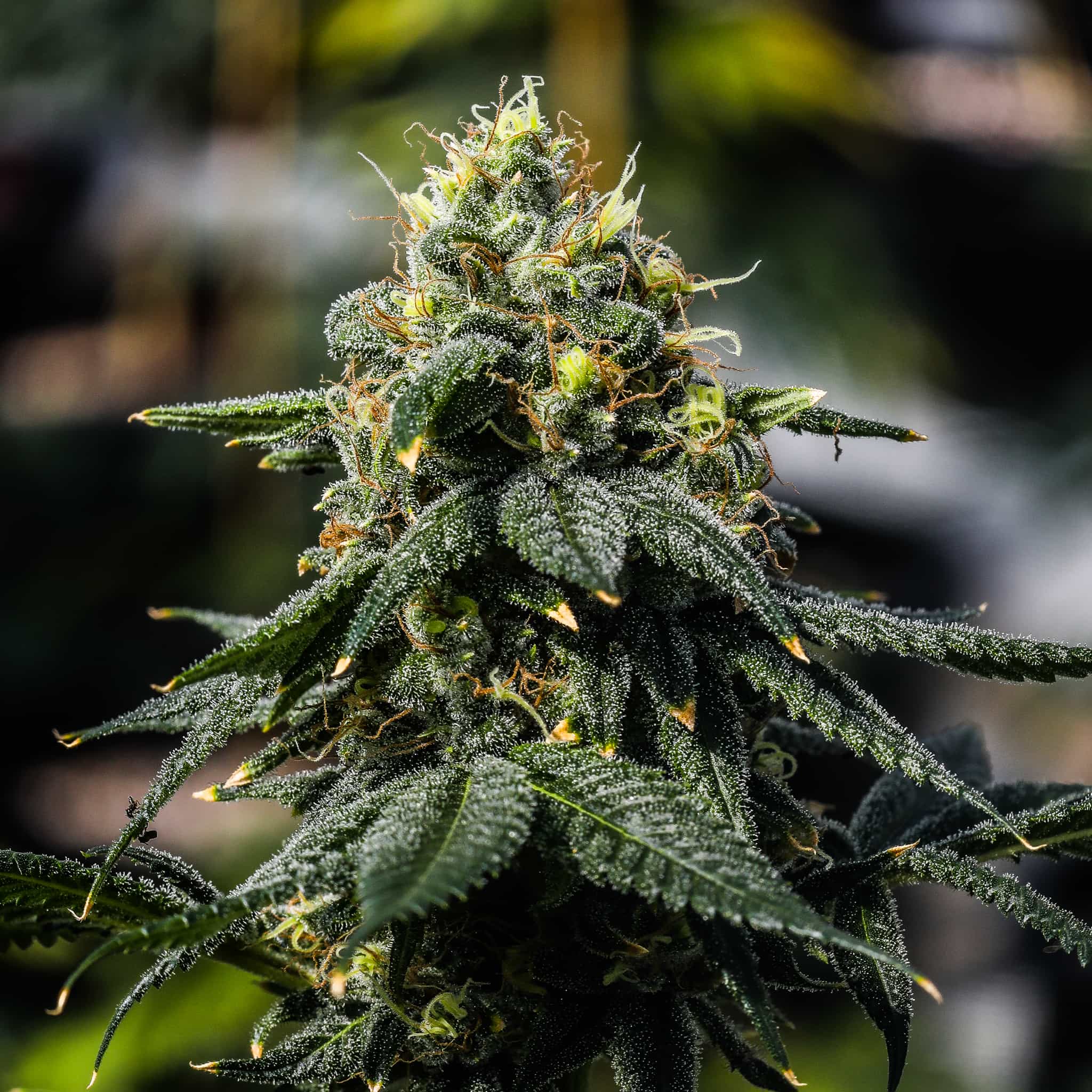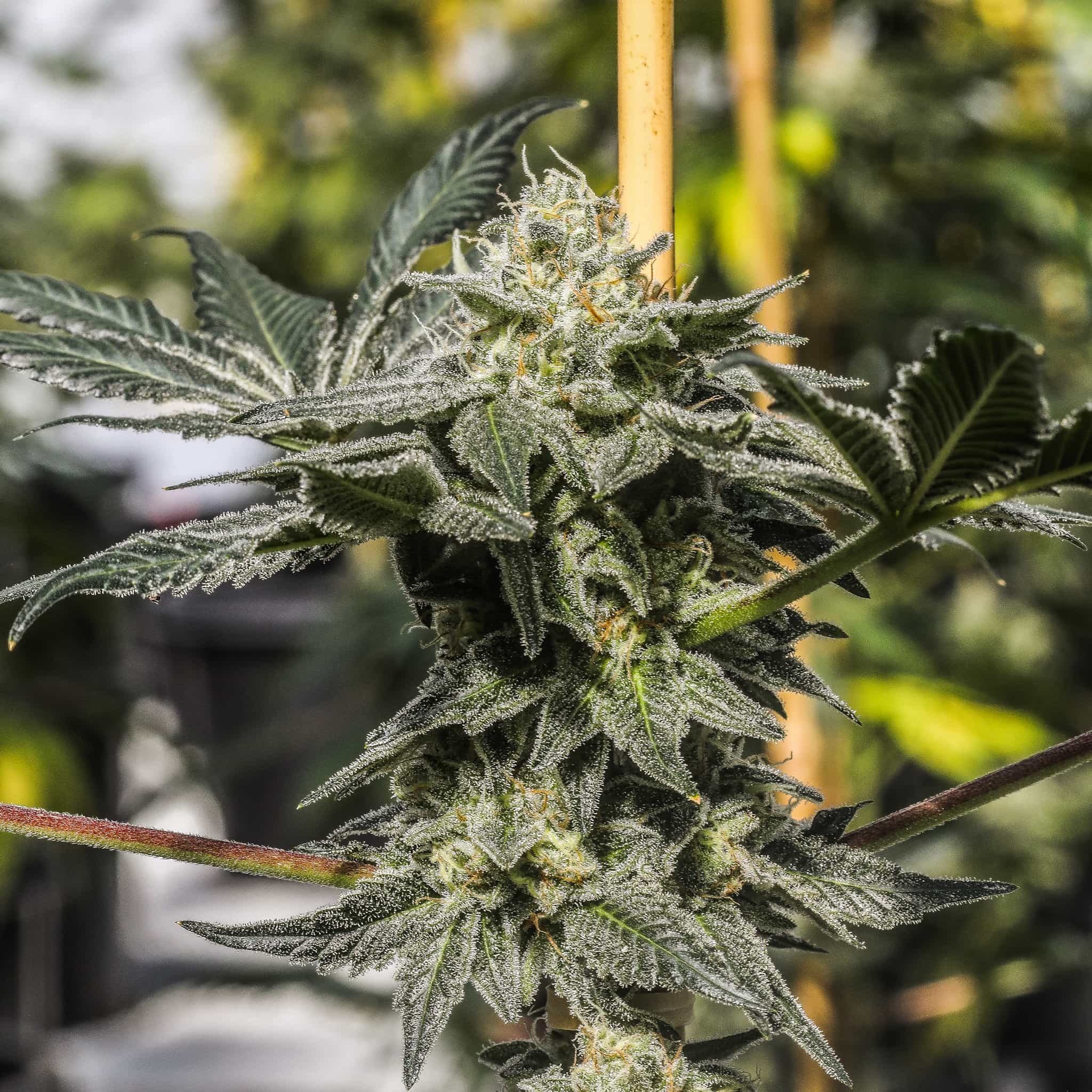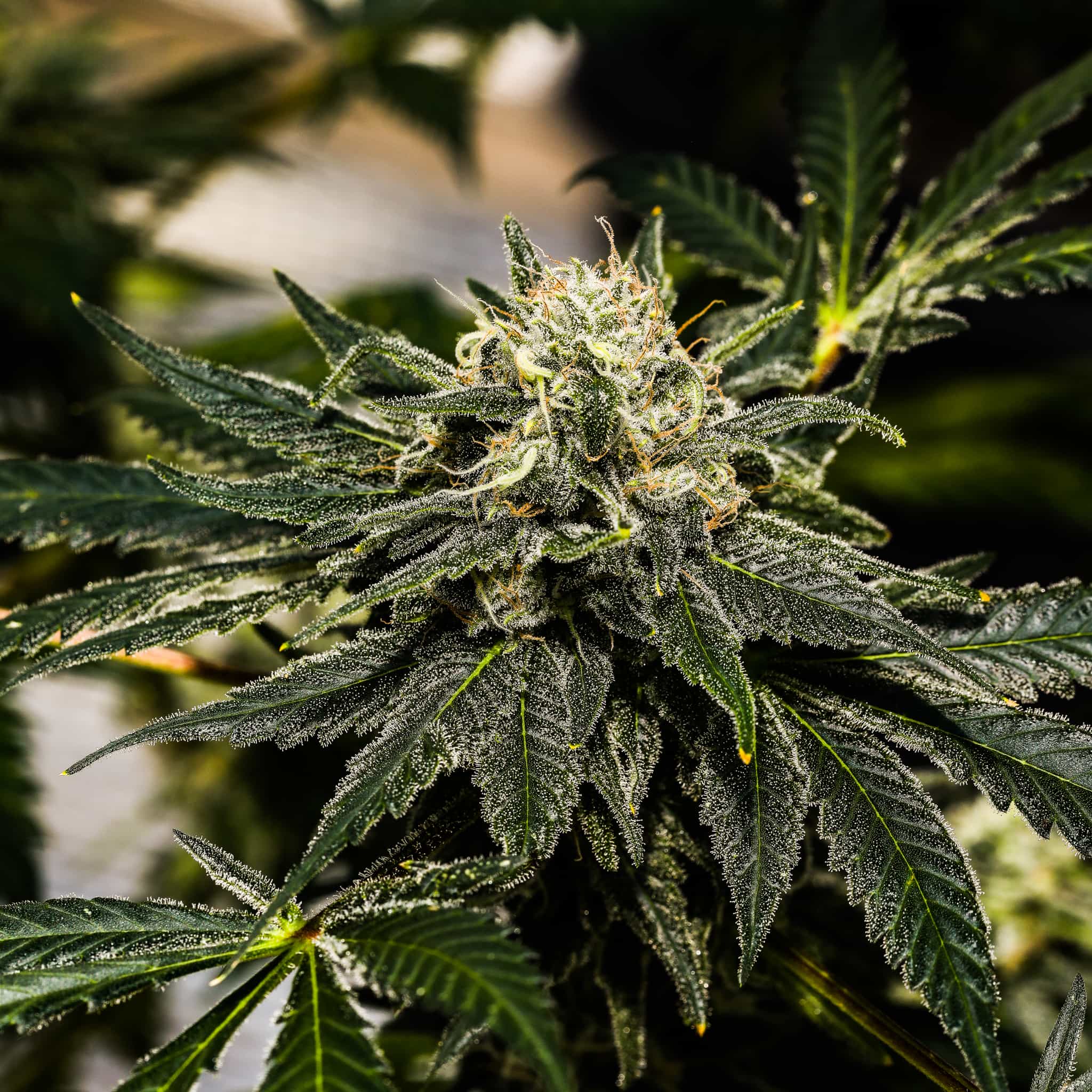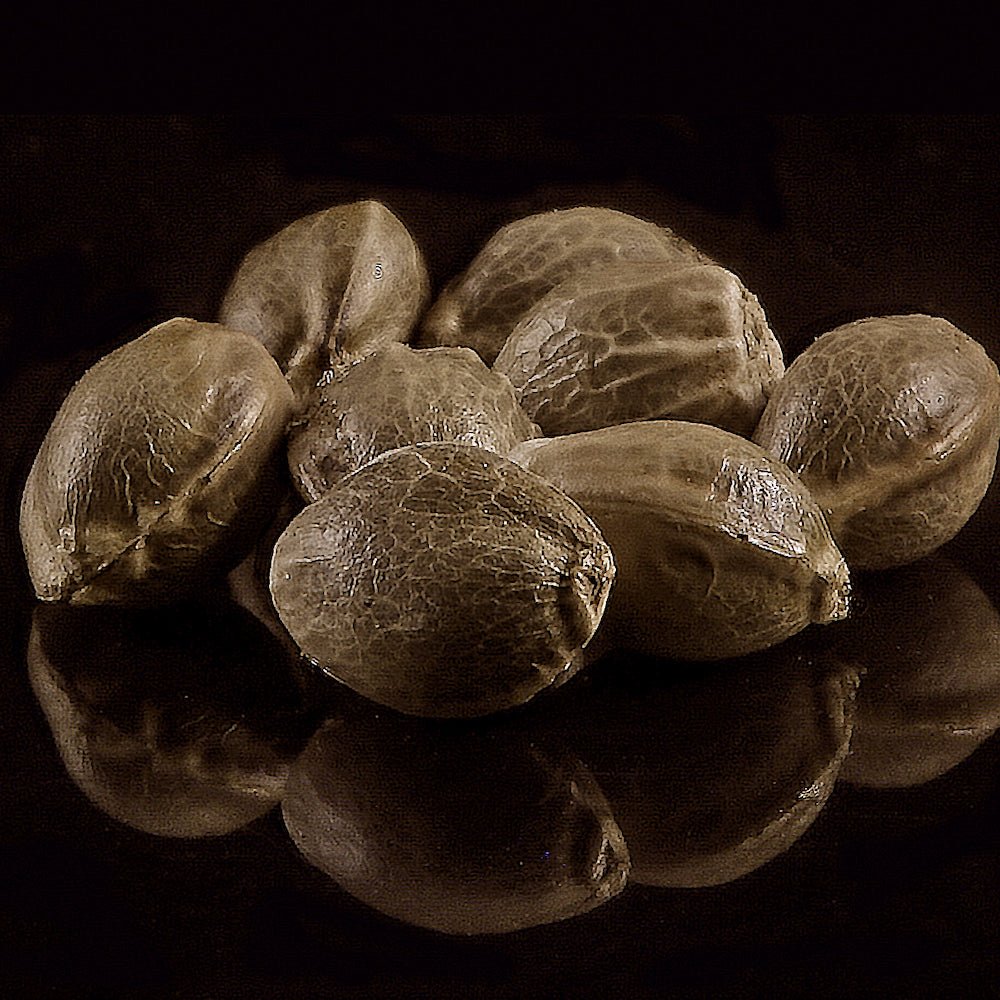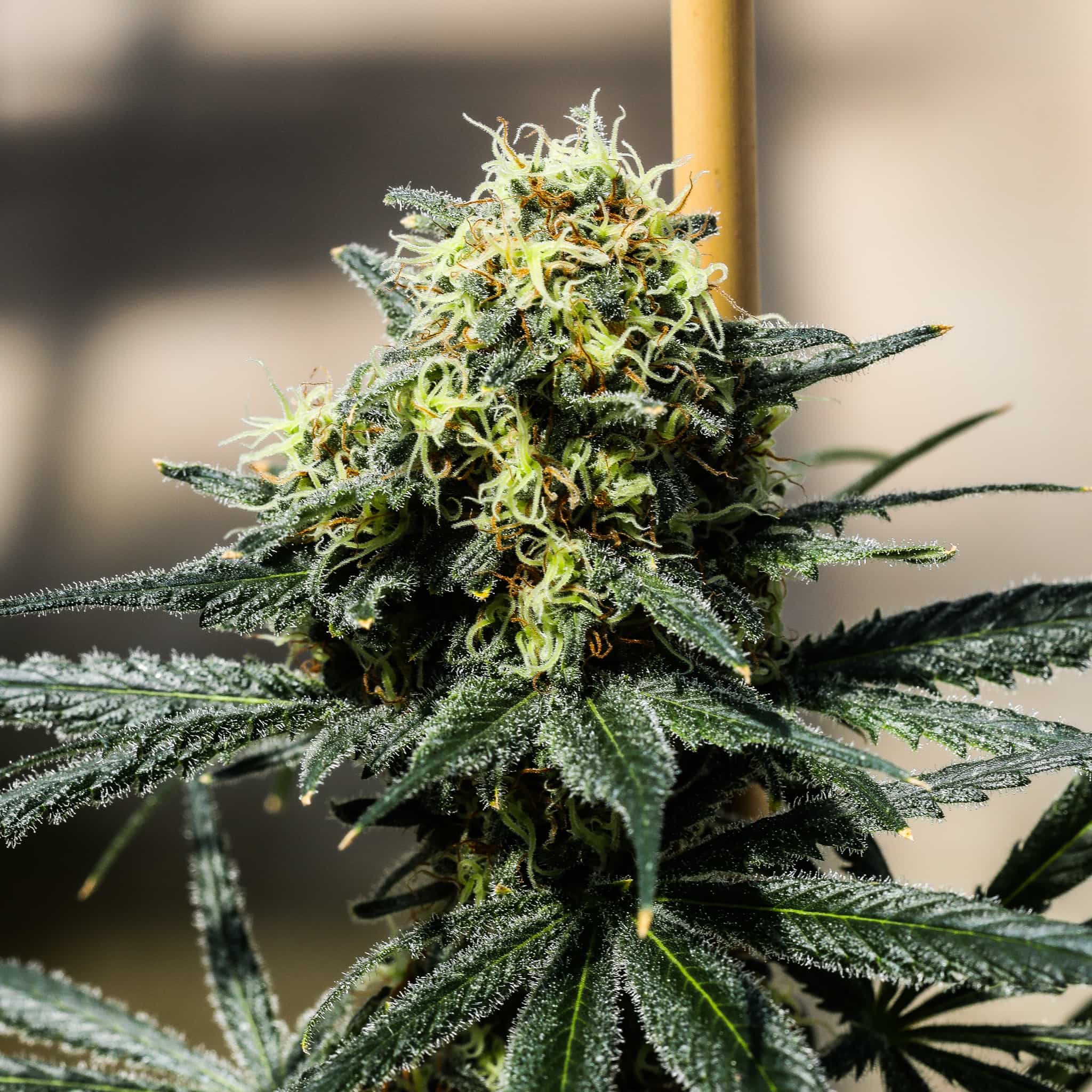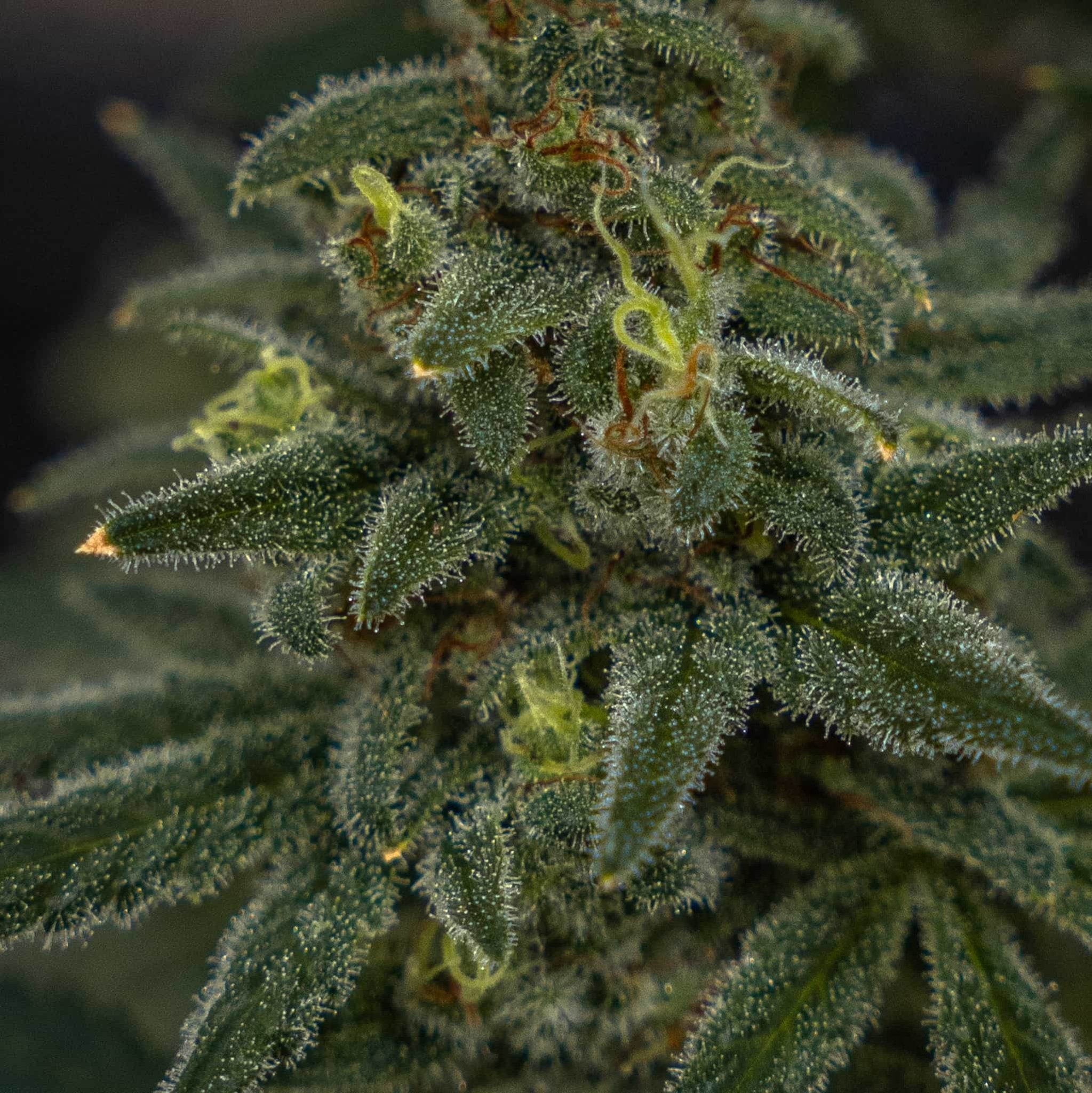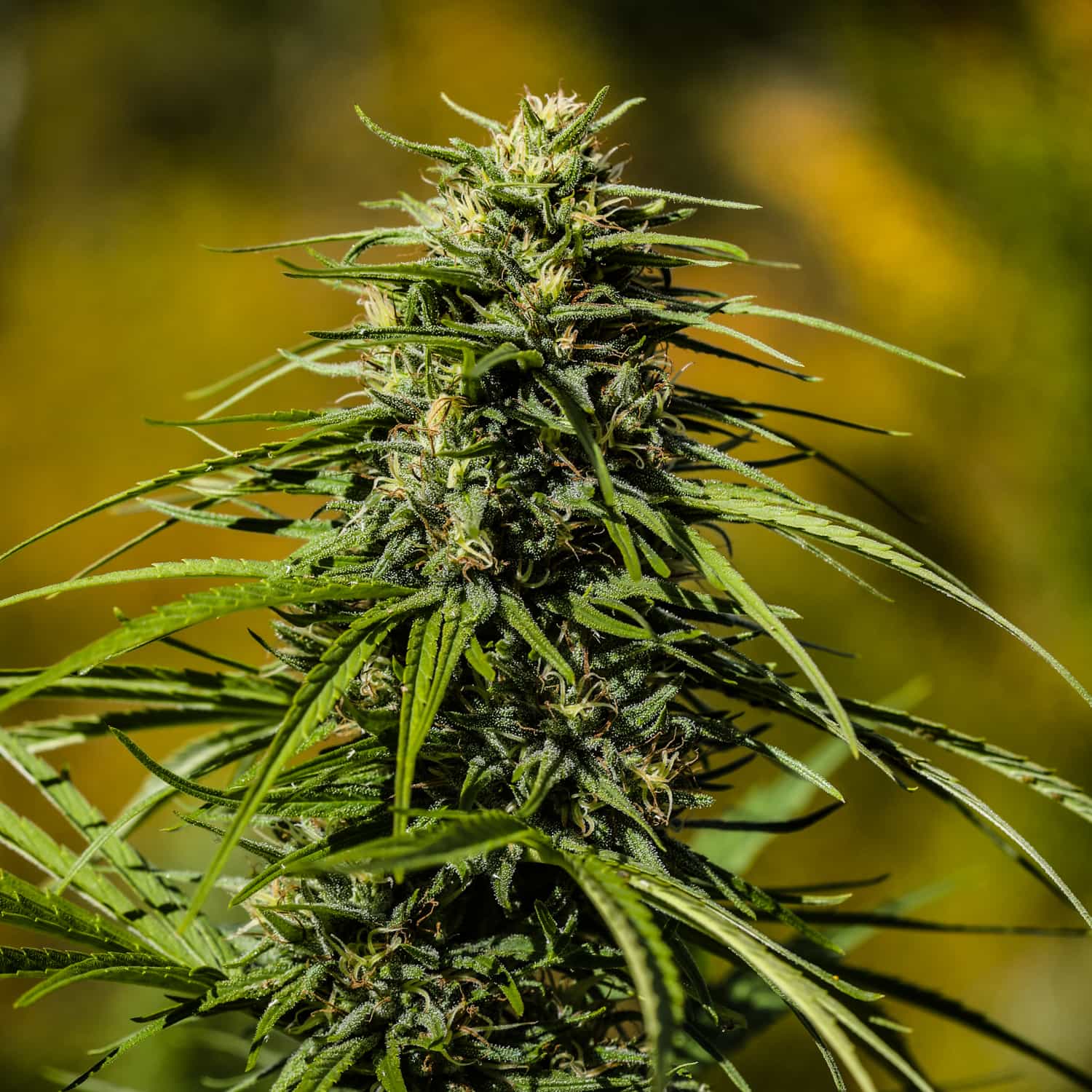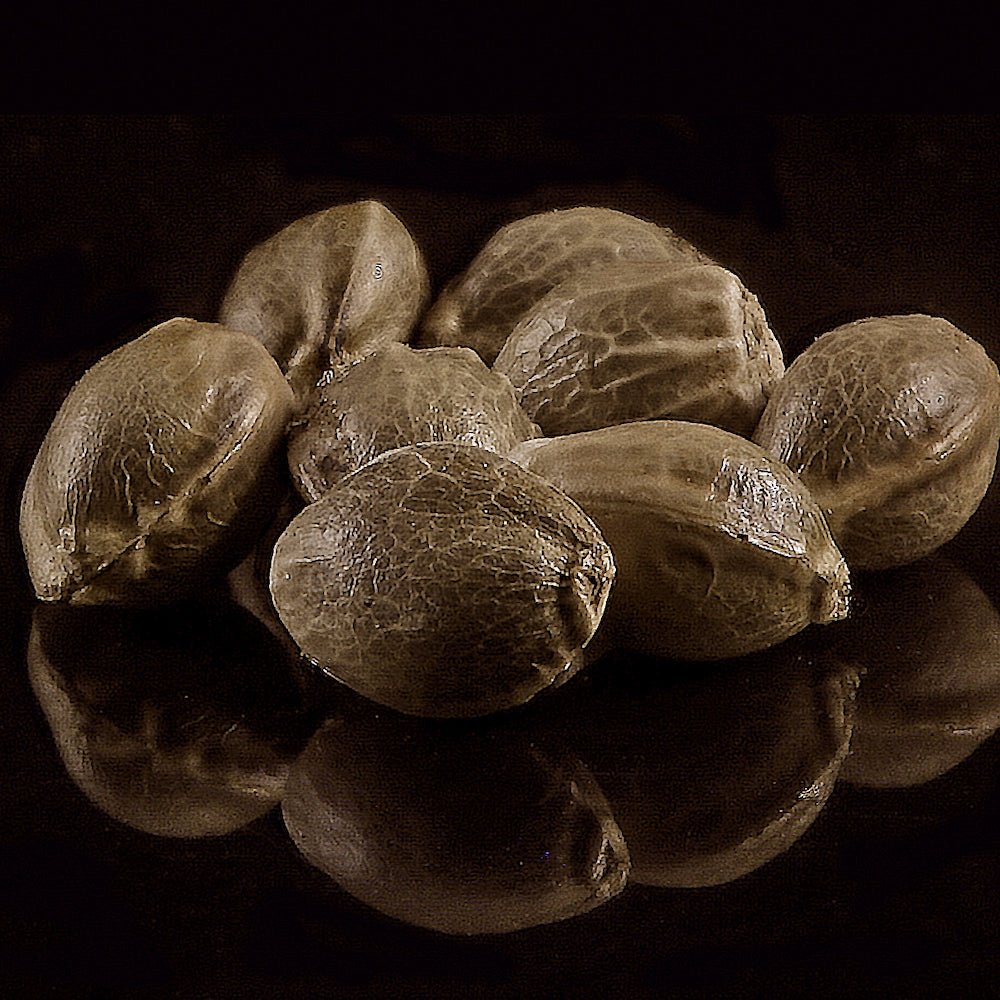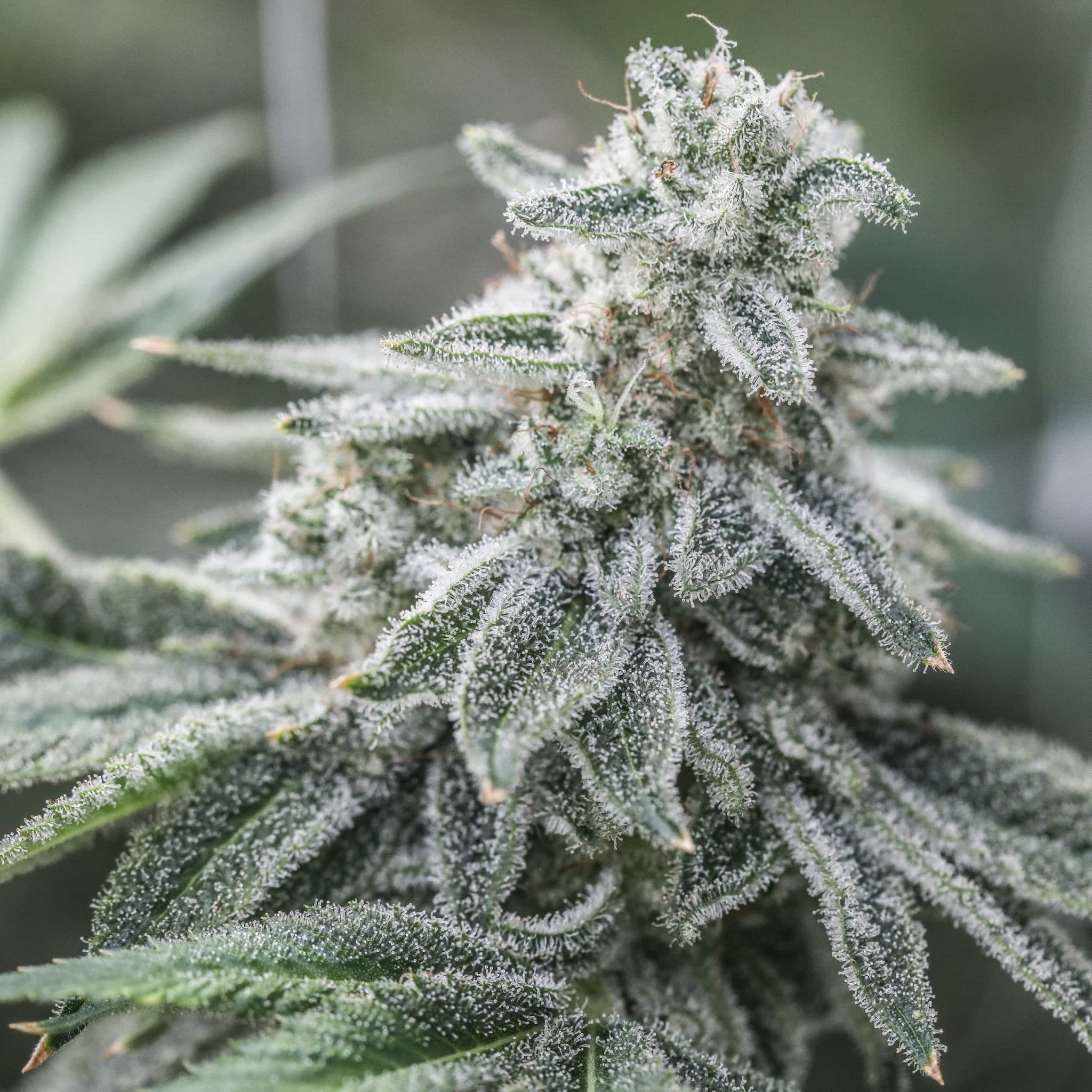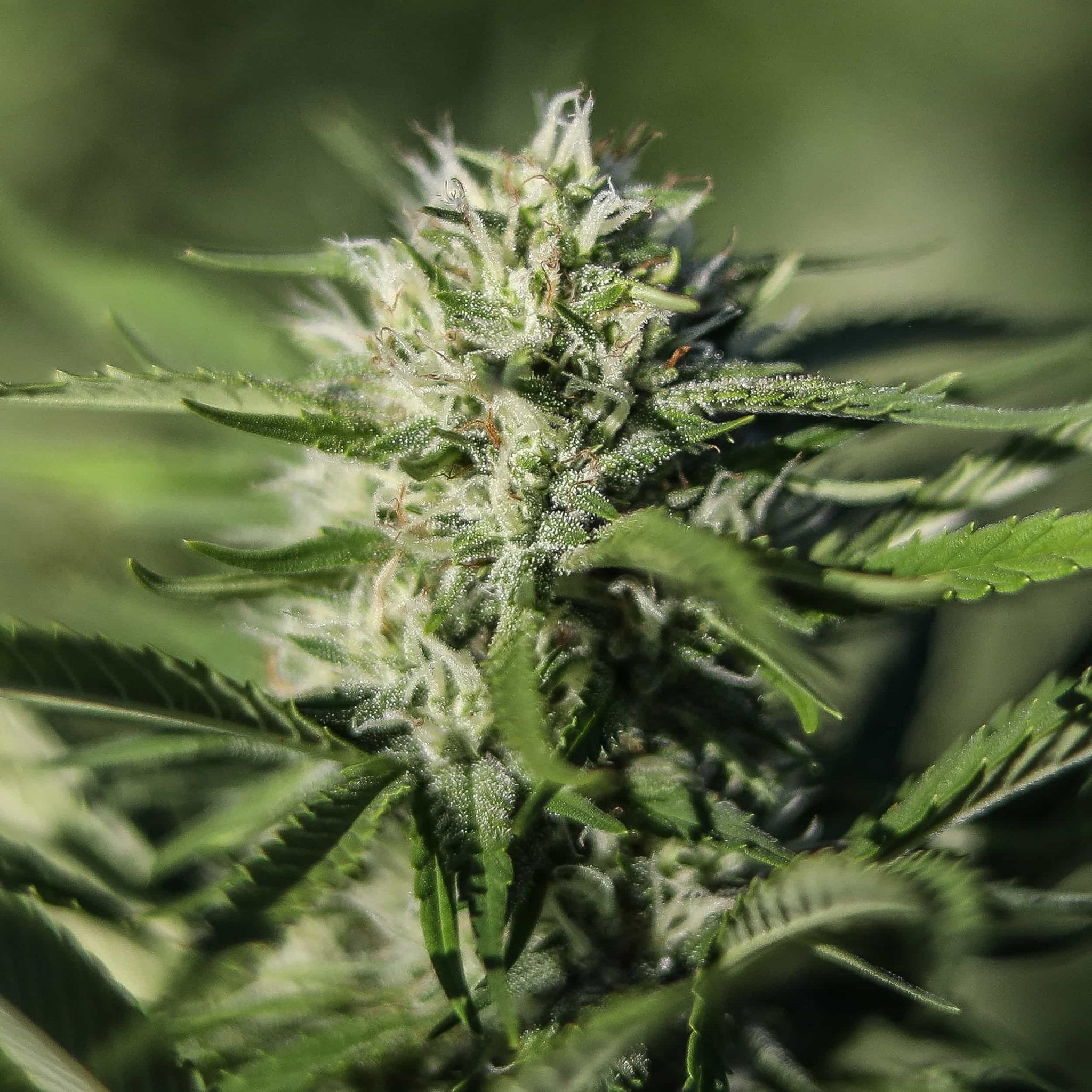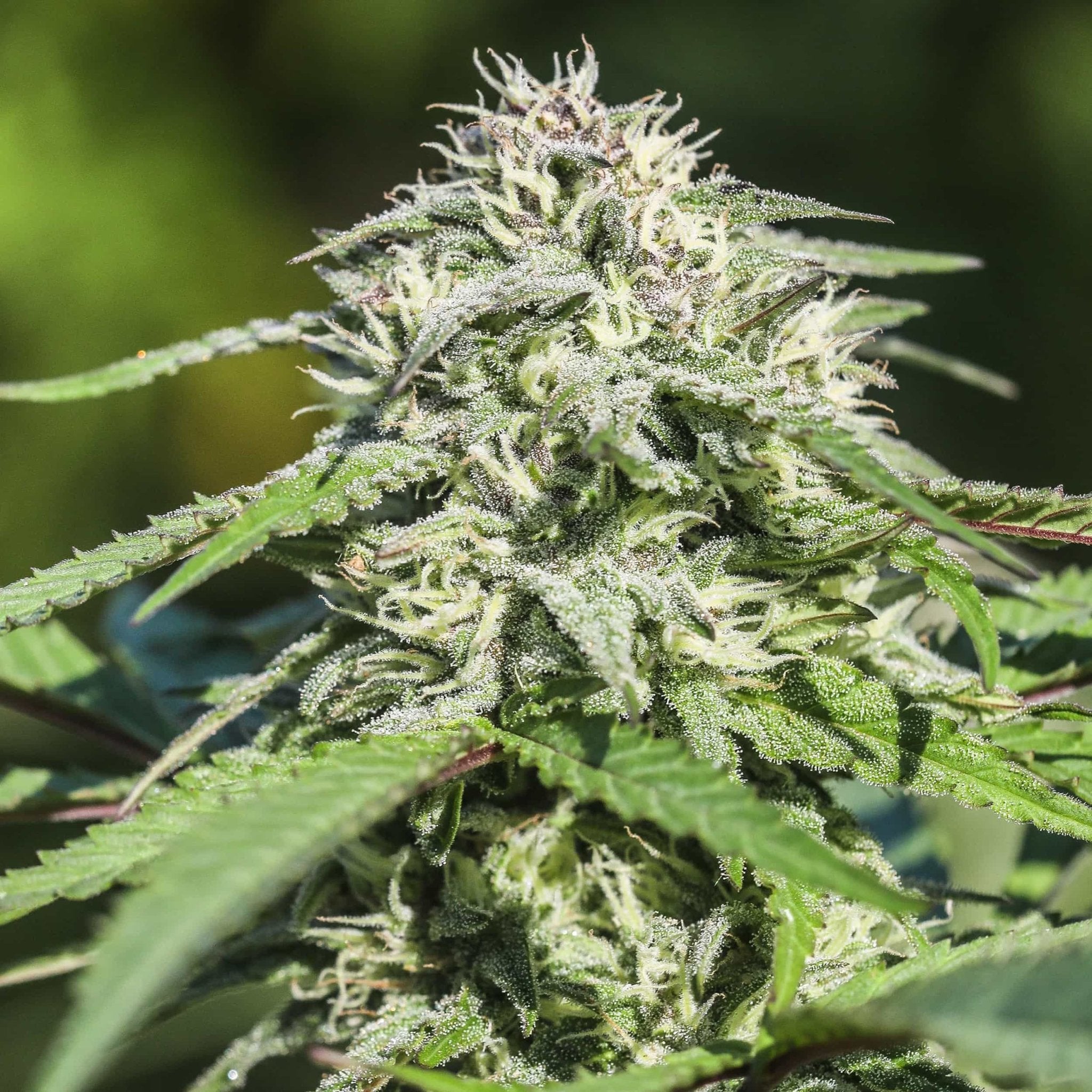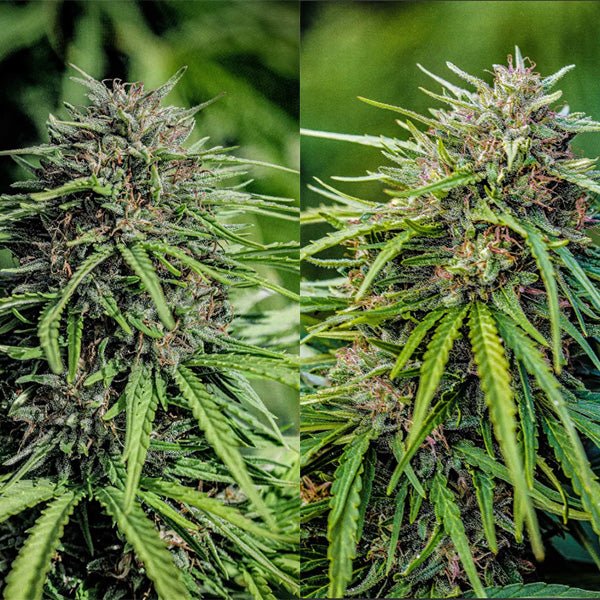As many have learned over the years, breeding CBG seeds is not as simple as CBD breeding.
After discovering our first needle in the haystack in 2016, it took us three full years, tens of thousands of labor hours, thousands of chemical/genomic tests, and 45 acres of field trials to develop our lines. We released White CBG to a small number of farms in 2019 and both White and Stem Cell to all farmers for 2020. Why not Stem Cell CBG in 2019? The answer is critical for farmers to understand and a warning to knock-off artists--it's all about ratios.
There are at least 8 genes responsible for THC production in our CBG varieties. The mother to our White CBG line--named due to its unique, snow-covered appearance and lineage to "The White"--has as many active copies of this gene as a standard CBD variety, giving her a CBG to THC ratio of 27:1. The pollen donor has very few CBCA genes and makes amazing, early flowering hybrids with ratios ranging between 100:1 to 200:1--they always produce extremely low THC content -- below 0.3% total THC. The irony lies in that the CBG is actually produced by a non functioning THCA synthase gene.
As any traditionally trained breeder will know, accounting for 8 loci results in a 2^8 (256) possible allele combinations and a Punnet square with 65,536 boxes. This requires literally millions of plants to be grown out and individually tested (specifically for CBCA gene copy number and SNP variations) to create pure breeding stock like ours. Keep that in mind as you see "snowy" sounding CBG varieties without any historical testing documents to verify claims of independent development. F2s of our varieties have unstable flowering times, but can also lead to failed compliance tests. White CBG is great for farmers, but very bad for breeders.
I layman's terms, its hard to find a CBG cultivar. And even if you do - the genes responsible for CBG production are recessive. If you cross a CBG dominant variety with a plant dominant in any other cannabinoid - the resulting offspring with always be CBD or THC dominant with only minor amounts of CBG. In order to make a stable cross that produces almost exclusively CBG, you need two plants that already produce almost exclusively CBG. With the years of work, and millions of dollars we spent tracking down two separate lines - we can almost guarantee every CBG seed on the market is linked to our discoveries. While other breeders might offer CBG seeds - they will be just be our two varieties recombined.
In fact, Cornell University analyzed a pile of CBG genetics on the market and they all showed the same gene responsible for CBG production that is in our lines. Virtually everything on the market is a hybrid of our needles in the haystack.

